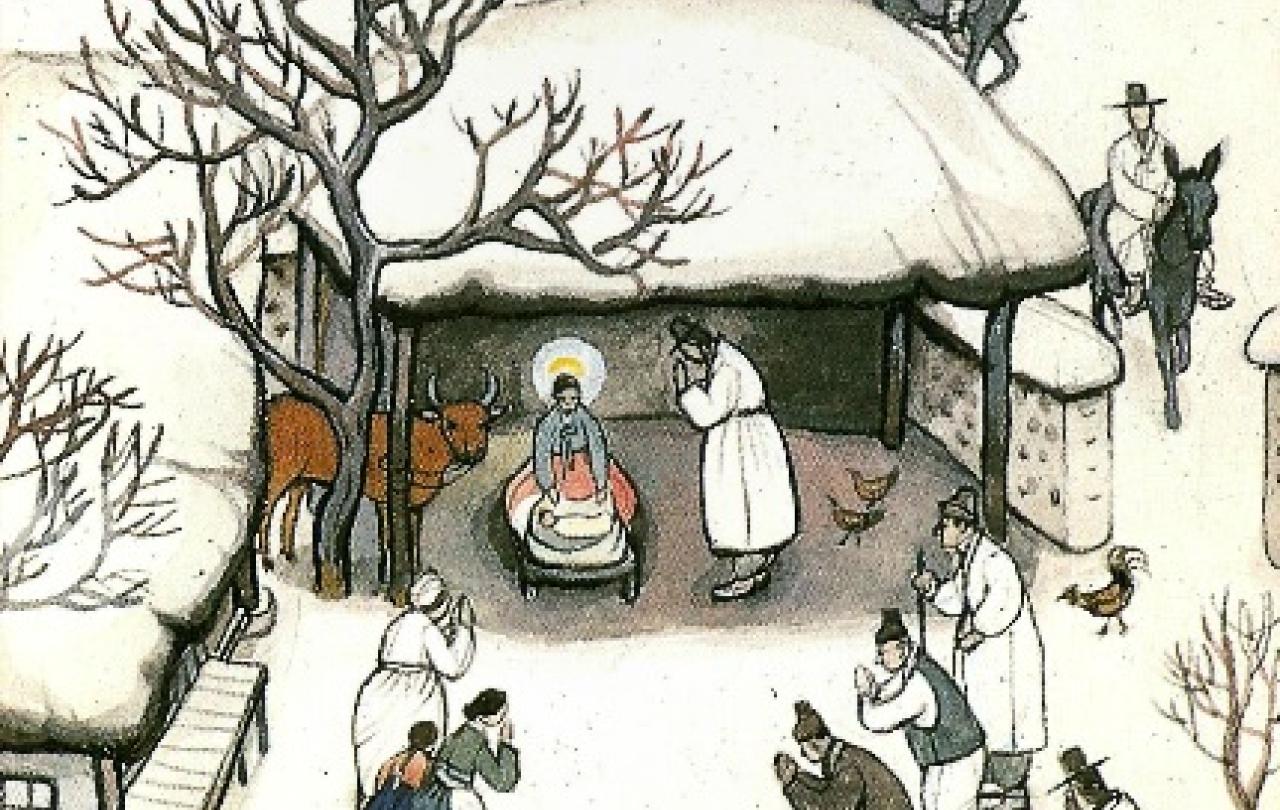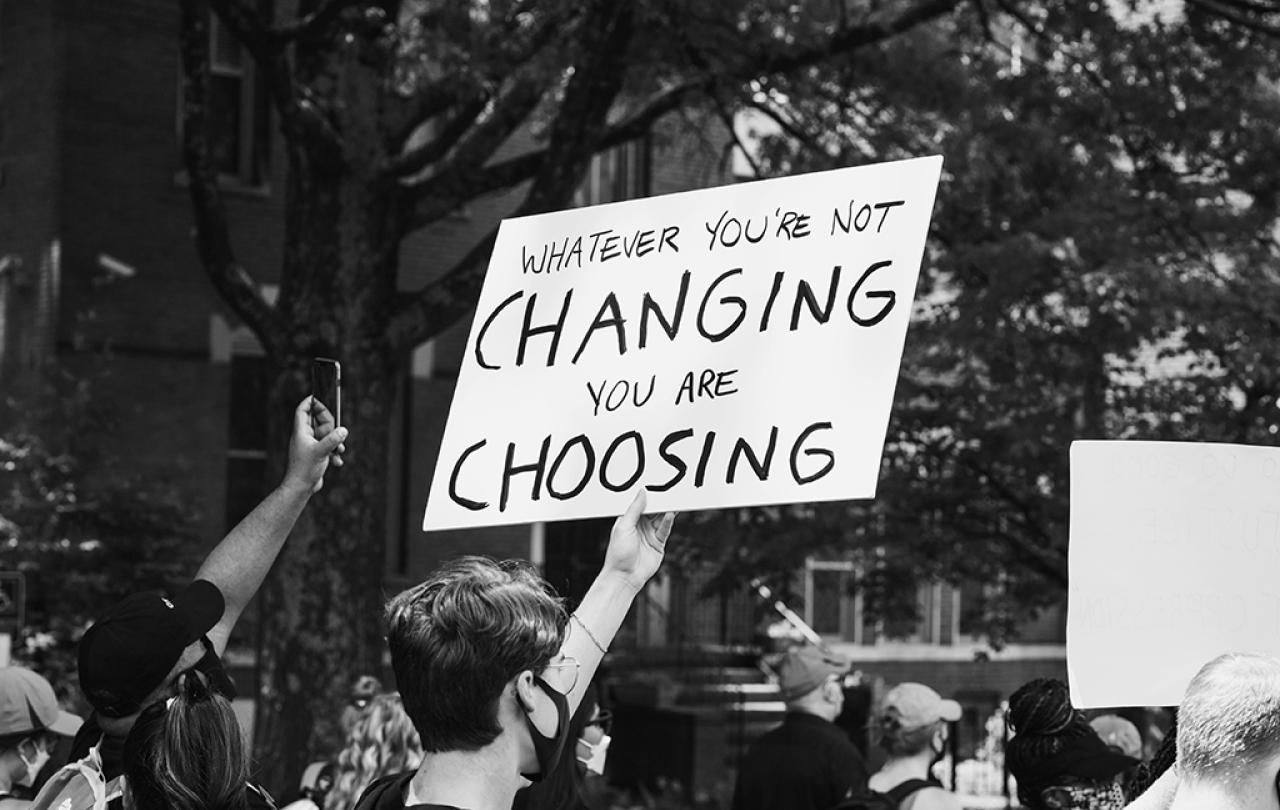Graham: So great to see you today, Miroslav.
Miroslav: It's always wonderful to see you too.
I want to talk to you about life in the USA in this election year and some of the issues surrounding that. What do you feel is the mood in the USA at the moment as the election approaches?
It's tough to describe it, but I would say that predominantly it's a mix of belligerence along with apprehensiveness and uncertainty. I think the American left isn't the happiest with its candidate. They wonder whether Joe Biden can win against Trump, and whether he is too old to be president. On the other side, I see a certain kind of triumphalism and an increasing radicalism, and that is, for many people, worrisome. I also note a willingness to fight. And then there are some, among them some of my colleagues at Yale, who are determined to leave the country if things don't turn out quite the way that they hope! I tell them that I'm used to living under authoritarian regimes - that's how I grew up - and it's possible! Perhaps also responsible.
Back in 1996 you published your book Exclusion and Embrace, which largely came out of your experience of the war between Croatia and Serbia, and before that, living, as you say, under a totalitarian regime in eastern Europe. I was struck by a question you asked there: “what kind of selves do we need to be to live in harmony with others?” I wonder how you reflect on writing that book now in the context of contemporary America, which seems much more polarised than it was back in 1996? Is there some of that work that resonates particularly with the US situation right now?
I think so. Some eight years ago - I'm not sure exactly where to draw the line - I sensed that the political fronts were hardening. They have since become almost completely mutually closed. Any movement toward the middle, towards reconciling, is experienced as a defection and weakening of one’s side.
I have felt it before, in the former Yugoslavia. When I wrote the book advocating “embrace,” it fell on deaf ears - for Croats, Serbs, and Muslims. The book was written and published as the war was going and had barely ended and my compatriots felt that I was taking away their enemy; they were invested in having one. The time for reconcilers comes when fronts have gotten a little bit more porous than in situations like the one I've just described, which is to say that the time for reconcilers is ‘ordinary time’, rather than making interventions in the actual situation of conflict.
As to the kinds of selves we need to be, whether in conflict or before or after it, I think it's being people who resist themselves becoming closed by the boundaries of the combatants in the fight, people who are able to see beyond the seen to the unseen, as it were, who hope for the unhoped for and who have the moral ground on which they stand, whose “will to embrace” has not been undermined by violence.
In that book you also wrote about repentance and forgiveness as being crucial elements in reconciliation. Do you see much evidence of repentance and forgiveness within the USA right now? If not, what would it take to bring about that kind of culture within American life?
I don't see much willingness. I see the culture becoming increasingly unforgiving. There are, of course, ritualistic gestures of forgiveness in different domains of life, but they're really public image management tools rather than steps toward reconciliation.
Some of the resistance to forgiveness is a function of the conflict, as I noted earlier. In cultures of late modernity, I see another reason for resistance. For the most part, we operate with the narrative account of the self: ‘I am what I have done, what has been done to me, what I have made out of what I've done and what others have done to me.’ But if you have this notion of the self, how do you do what the miracle of forgiveness requires? How do you unglue the past deed from the self that has committed that deed, when that deed is—by definition— defining of the person? Forgiveness requires a vision of the self that isn’t defined by its acts. For Christians, God’s unconditional love defines the self. That emphasises the importance of the Christian message and deep theological reflection on it to make such an account of the self plausible.
And to take that idea further, much of our identity politics language tries to isolate one particular aspect of a person's self, and so that's the only thing I need to know about. So, I might say to you: I know what you're like. You're Croatian and therefore I can either say you're one of my tribe or you're not one of my tribe and I can either shun you or accept you that way. But of course, we are, as people, much more complex than that. We're much more multifaceted. We have different identities that are not just about nationality, but they're about relationship, embeddedness within society, political or family allegiances and all kinds of different facets of our selves. That trend to isolate one aspect of the self as definitive is surely quite unhelpful in enabling us to engage with each other as persons, as opposed to just a projection of our imagination?
It's a kind of betrayal of the particularity of the self and an inability to perceive the person as the particular individual that they are. I think that's also the case in ethnic or political conflicts. I remember during the war in the former Yugoslavia, saying to my fellow Croatians: “To be a Croatian is, almost by definition, to have Serbs as your neighbours.” But, obviously, in the situation of conflict, the last thing you want to hear is that you have been defined by your relationship to the person whom you now want to obliterate!
Exactly. And you can see that same dynamic playing out in the Israel-Gaza situation right now. In many ways, Israel is defined by its relationship with the Palestinians, and Palestinians are defined by their relationship with Israelis, and you can't get away from that.
These days we often hear about culture wars. Progressives and conservatives offer different visions of the future. In the United States that seems a very polarised, toxic debate. Do you think that Christian faith offers a different path from either? Does it beckon us on a third path that is different from the conservative and the progressive polarity?
Yes, it does, especially with hardened polarities of this sort. You know the old adage – “I don't care what's left and what's right; I care for what's right and what's wrong.” This right / wrong contrast, this dualistic moralism of religious traditions, can obviously be lived in different ways. But if we understand it in the properly Christian way, with humility, the contrast between right and wrong seems to me important because it provides us an independent place on which to stand and from which to open up a space for movement in this rather sterile conflict, or at least not to let ourselves be drawn into it.
To nurture such Christian independence, we need to return to the big question that Dietrich Bonhoeffer asked toward the end of his imprisonment: “Who is Jesus Christ for us today?” That seems to me to be a central question, and it helps avoid the temptation of the church—as you see happening in the United States on both sides, left and right—to a certain kind of identification with the politics of a cause.
I don't know if you've seen this book The Kingdom, the Power and the Glory: American Evangelicals in an Age of Extremism, by Tim Alberta, which is very interesting. He’s a staff writer for The Atlantic, and this is his second book, looking primarily at the evangelicalism’s betrayal of the gospel, “thinning out,” so to speak, into a nationalist civil religion.






